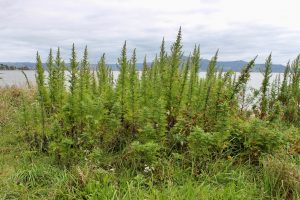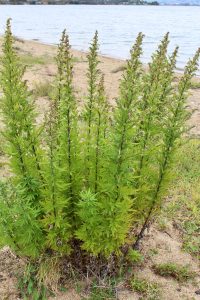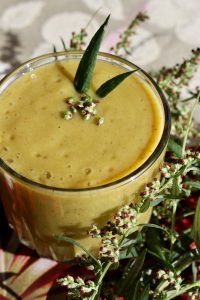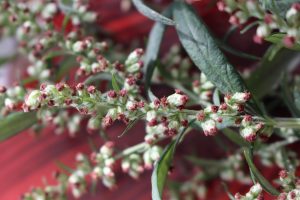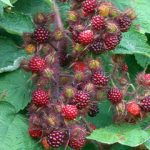I love this wild, imposing 2m plant that grows in a group with spreading rhizomes. It is perennial with narrow, pointed leaves dull green on the top and lighter grey green underneath, evocative of the light of the silvery moon. The reddish brown flowers are small, and actually look like buds that don’t open to anything showy. The above ground parts die down in winter.
There are two main varieties of mugwort similar in their properties. Artemisia vulgaris grows in Europe and A. verlotiorum growing here in NZ is the variety originating from South China. I had this belief that ‘mugwort’ was a derogatory name to somehow lessen the plants’ values. Turns out it is an old English word meaning ‘midge-plant’ said to repel midges with its pungent aroma [1] reminiscent of chrysanthemums and sage.
I also love that Mugwort’s Latin name ‘Artemisia’ comes from the Greek moon goddess Artemis who is goddess of the wilderness, the hunt and wild animals, and fertility. This wild huntress assists us in going for our dreams and goals in an independent self-reliant way[2]. Artemis is also helper of midwives as goddess of birth. Both Hippocrates and Dioscorides (their works influenced the development of modern medicine. Hippocrates is known for the Hippocratic oath – “First do no harm”), endorsed the use of mugwort to ease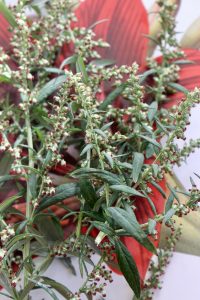 and hasten childbirth.
and hasten childbirth.
Mugwort is a tonic herb acting on the digestive and nervous systems. It has diuretic effects and increases sweating. In Chinese medicine mugwort is used in moxa, a method of stimulating acupressure points in cases of internal cold. The dried leaves of mugwort are compressed into a wick that is lit and as it smoulders it is held close to the skin to increase blood flow and internal energy.[3] I have had moxa as part of an acupuncture treatment and it does feel very warming.
The young fresh green leaves can be used in salads and smoothies, but when the stalks get over a foot high it becomes more potent, and then the plant feeds our souls with her magic. People make cleansing smudge sticks used in rituals and ceremonies or to clear spaces of stale energy. Mugwort has a stimulating effect on the creative centres of our brain and can be used as a base in dream pillows to enhance dreaming.
A tea can be made with the young leaves, steeping them in the sun and adding some honey makes a refreshing drink.
Mugwort Smoothie Recipe
- 1 banana
- 4 feijoas
- 3 tsps mugwort flower buds (dried or fresh)
- ½ tsp turmeric (or cut a piece of fresh)
- 1 tsp ginger (cut off a piece of fresh root)
- 1 tbsp honey
Put all ingredients into a blender. Blend slowly to start, then increase the speed. Drink and enjoy!
[1] Robin Harford, www.eatweeds.co.uk
[2] Amy McComb www.plantrhythms.com
[3] Brown, D.,2001, Herbal: Essential guide to herbs for living, Pavilion, London
